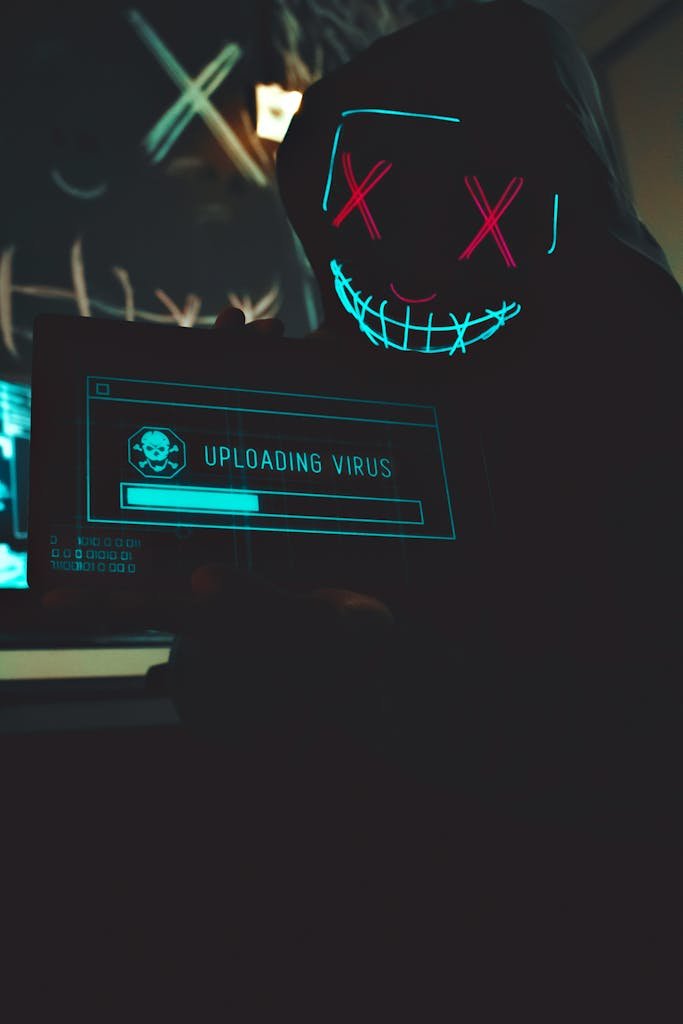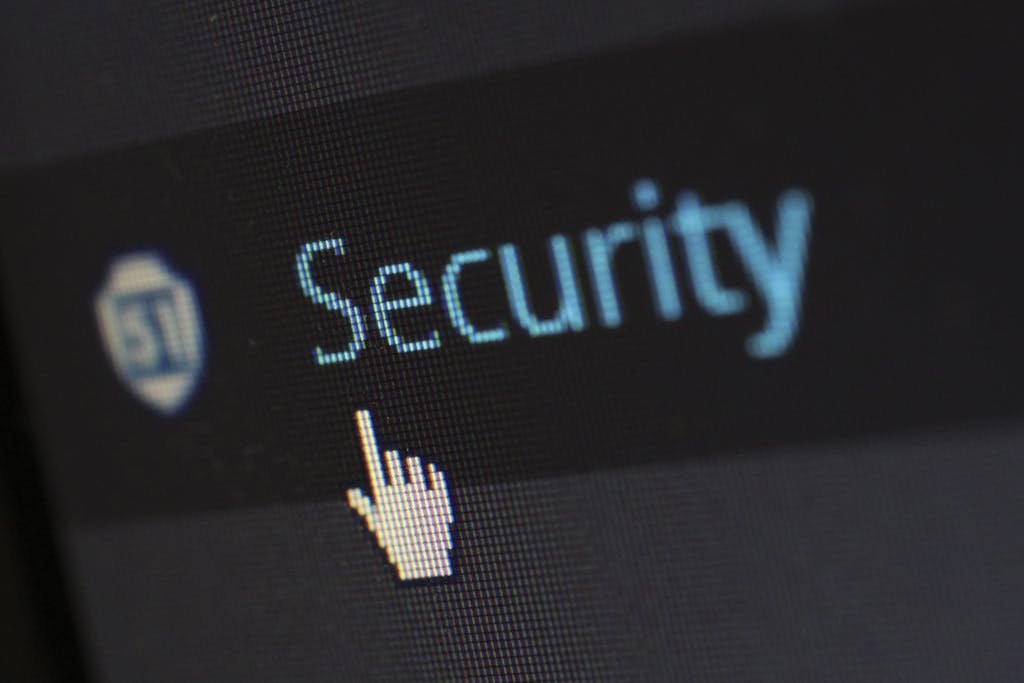How to Prevent Phishing Attacks in 2024
Introduction
In the rapidly evolving digital landscape, the threat of phishing attacks has become an increasingly pertinent issue for individuals and organizations alike. Phishing, defined as the fraudulent attempt to obtain sensitive information by disguising as a trustworthy entity in electronic communications, presents significant risks. These deceptive practices can lead to severe data breaches, financial loss, and reputational damage. As technology advances, so do the tactics employed by cybercriminals, making it vital for users to remain vigilant and informed.
The year 2024 brings with it fresh challenges in the realm of cybersecurity, with phishing attacks becoming even more sophisticated and harder to detect. As people increasingly rely on digital communication for personal and professional interactions, the opportunities for cyber threats multiply. Recognizing phishing attempts can be particularly challenging as they may mimic legitimate businesses or utilize social engineering techniques to deceive unsuspecting victims. This underscores the urgency for effective preventive measures.
Given the significance of phishing attacks, it is crucial to explore preventive strategies in detail. Individuals and businesses alike must stay one step ahead of cybercriminals by understanding not only the common tactics used in phishing schemes but also the best practices for safeguarding their sensitive information. This involves educating oneself and employees about potential threats, implementing robust security measures, and fostering a culture of awareness around cybersecurity. By prioritizing these preventive approaches, we can better protect ourselves and our organizations from the potentially devastating effects of phishing.

Overview of Phishing Attacks
Phishing attacks represent a significant threat in the digital landscape, characterized by fraudulent attempts to obtain sensitive information such as usernames, passwords, and credit card details by masquerading as a trustworthy entity in electronic communications. These deceptive practices typically occur through emails, messages, or websites designed to look legitimate, luring individuals into providing private data under false pretenses. The primary purpose of such attacks is financial gain, often leading to identity theft or unauthorized access to confidential systems.
The evolving nature of phishing methods warrants ongoing vigilance. Cybercriminals continuously refine their strategies, adopting sophisticated technologies and techniques to circumvent traditional security measures. This progression can manifest through various forms, including spear phishing, which targets specific individuals or organizations, and whaling, aimed at high-profile figures within a company. As attackers become increasingly adept, the potential risks they pose to both individuals and organizations grow correspondingly.
It is essential for users to stay informed about the various tactics employed in phishing schemes. Recent trends indicate the increasing use of social engineering, where attackers leverage psychological manipulation to trick victims into revealing sensitive information. As users become more aware of these risky behaviors, they can take proactive steps towards safeguarding their personal and professional data.
In essence, understanding the definition and purpose of phishing attacks is critical to mitigating their impact. Awareness allows individuals and organizations to implement effective preventive measures. This not only enhances personal security but also reinforces the overall integrity of systems significantly affected by data breaches and cyber threats.
Understanding Phishing
Phishing is a form of cybercrime that employs deceptive tactics to lure individuals into providing sensitive information, such as usernames, passwords, credit card numbers, and other personal data. It typically occurs through emails, messages, or websites that appear legitimate but are, in fact, fraudulent. The fundamental technique used in phishing attacks is social engineering, which manipulates trust and exploits emotional responses to trick users into acting against their best interests.
The motivations behind phishing are varied, but they primarily revolve around financial gain, identity theft, or unauthorized access to sensitive data. Cybercriminals often impersonate reputable entities, such as banks, online services, or trusted colleagues, to create a sense of urgency. This tactic compels individuals to respond quickly and, as a result, reduces their ability to critically assess the legitimacy of the request. Common shapes of phishing attacks include spear phishing, which targets a specific individual or organization, and whaling, aimed at high-profile targets such as executives.
The consequences of falling victim to such schemes can be severe. Individuals may experience financial loss due to unauthorized transactions or identity theft, while organizations may suffer data breaches, reputational damage, and regulatory penalties. Additionally, the impact of phishing attacks extends beyond immediate financial implications; victims may face long-term consequences such as credit damage and emotional distress. It is therefore essential for both individuals and organizations to develop a comprehensive understanding of phishing attacks to implement effective preventative measures. Awareness of this threat can empower users to recognize and mitigate the risks associated with such deceptive practices.

Common Types of Phishing Attacks
Phishing attacks are varied and can take many forms, each designed to deceive individuals into disclosing sensitive information. One of the most prevalent types is email phishing, where attackers send fraudulent emails that appear to be from a legitimate source. These messages often prompt users to click on malicious links or provide personal details, usually by imitating familiar brands or institutions. For example, a typical email might appear to come from a bank, requesting account verification details.
Another notable variant is spear phishing, which targets specific individuals or organizations. Unlike general phishing attempts, spear phishing is highly personalized, often utilizing personal information gathered from social media or prior interactions to enhance credibility. This form of phishing can be particularly dangerous, as the communication seems more legitimate and is tailored to the recipient’s background or interests.
Whaling is a more sophisticated approach that aims at high-profile targets, such as executives within a company. Attackers craft messages that resemble legitimate business communications, exploiting the victim’s role to gain access to confidential information or financial resources. For instance, a whaling attack might involve a fake invoice designed to appear as though it requires immediate payment from a corporate officer.
Beyond these techniques, smishing (SMS phishing) and vishing (voice phishing) have emerged as significant threats as well. Smishing involves sending deceptive text messages that prompt the recipient to click on a link or provide personal details. Vishing, on the other hand, typically occurs through phone calls where attackers impersonate legitimate entities to extract sensitive information directly from the victim.
Understanding these various types of phishing attacks is crucial for developing effective prevention strategies. Each method has its unique characteristics and risks, highlighting the importance of vigilance in identifying and countering potential threats.
Current Trends in Phishing Attacks
In recent years, phishing attacks have evolved significantly, with cybercriminals continually adapting their tactics to exploit technological advancements and changes in user behavior. As we examine the landscape in 2024, it is evident that these malicious activities are becoming more sophisticated, making it crucial for individuals and organizations to stay informed about current trends.
One notable trend is the rise of hybrid phishing schemes that combine traditional techniques with cutting-edge technologies. For instance, attackers are increasingly leveraging artificial intelligence to craft more convincing emails and messages that mimic legitimate communication. This not only enhances the credibility of their scams but also makes it harder for users to identify phishing attempts. Furthermore, the use of deepfake technology has emerged, allowing cybercriminals to manipulate video and audio content to impersonate trusted figures within organizations.
Another alarming pattern is the growing reliance on social engineering tactics. Phishing attacks are not just about rote tricks anymore; they are evolving to include thorough research on targets, making the communications appear highly personalized. Cybercriminals are utilizing social media profiles and online interactions to gather information, which allows them to create tailored attacks that significantly increase the chances of success.
Mobile phishing is also on the rise, as more users access sensitive information through their smartphones. Attackers are exploiting this trend by sending SMS or messaging app phishing links that capitalize on the convenience and urgency often associated with mobile communications. These targeting strategies highlight a shift in focus as cybercriminals adapt to users’ digital behaviors across different devices and platforms.
Ultimately, as we progress into 2024, the continuous adaptation of phishing tactics necessitates a proactive approach to cybersecurity. Awareness of these current trends contributes to the collective effort to identify and mitigate the risks associated with phishing attacks more effectively.
Recognizing Phishing Attempts
Phishing attacks have become increasingly sophisticated, making it crucial for users to develop the skills necessary to identify potential threats. A common tactic employed by cybercriminals is the use of deceptive emails that appear to originate from reputable sources. Recognizing the signs of these phishing attempts can significantly reduce the likelihood of falling victim to them.
One of the first indicators of a phishing email is poor spelling and grammar. Legitimate organizations typically maintain a high standard in their communications. If an email contains numerous typos or awkward phrasing, it is likely a warning sign. Additionally, be cautious of unsolicited messages that create a sense of urgency, urging the recipient to act quickly. Cybercriminals often exploit fear or time constraints to prompt impulsive reactions, which can lead to inadvertent exposure of sensitive information.
Another common sign is the presence of suspicious links or attachments. Before clicking on any link, hover your mouse over it to reveal the actual URL. If the web address seems random or does not align with the purported sender, it’s a red flag. Likewise, avoid downloading any unexpected attachments, as they may harbor malware intended to compromise your system.
Furthermore, personalization is key. Many legitimate organizations will address you by your name, while phishing emails may use generic greetings like “Dear Customer.” If an email lacks personalization, this could indicate a malicious intent. Always verify emails against direct communications from the organization in question, especially those requesting sensitive information.
By remaining vigilant and familiarizing oneself with these signs of phishing attempts, users can better protect themselves and their sensitive data. Awareness is the first step toward preventing these attacks in an increasingly digital world.

Preventive Measures
As phishing attacks continue to evolve, it is crucial for both individuals and organizations to implement effective strategies that minimize the risk of falling victim to these deceptive tactics. One of the first steps individuals can take is to ensure they utilize strong, unique passwords for their online accounts. Passwords should be a combination of letters, numbers, and symbols, and it is advisable to use a password manager to help maintain different credentials securely.
In addition to strong passwords, individuals should enable two-factor authentication (2FA) wherever available. This additional layer of security requires not only a password but also a second verification step, which can significantly reduce the chances of unauthorized access due to phishing attempts. Continuous education about the signs of phishing emails is equally important; individuals should be trained to identify suspicious messages that may contain harmful links or attachments.
For businesses, developing a comprehensive cybersecurity policy is essential. This policy should include regular employee training sessions focused on recognizing phishing attacks and the potential repercussions of such threats. Phishing simulations can serve as practical exercises, allowing employees to engage with realistic scenarios while learning to identify red flags.
Organizations should also implement email filtering technologies to assist in blocking known phishing attempts. Keeping software and systems updated ensures vulnerabilities are patched, reducing opportunities for cybercriminals to exploit. Furthermore, establishing a clear reporting procedure can empower employees to communicate suspicious emails or activities without fear of backlash, fostering a culture of vigilance around cybersecurity.
Ultimately, combining personal responsibility with corporate policies creates a robust defense against phishing attacks. By adopting these preventive measures, both individuals and organizations can significantly enhance their protection and safeguard sensitive information from potential breaches.
Technological Solutions
In the ongoing battle against phishing attacks, technological advancements are pivotal in fortifying defenses against cybercriminal activities. One of the most effective tools in this regard is anti-phishing software, designed specifically to identify and neutralize potential threats before they can inflict harm. These solutions employ sophisticated algorithms and machine learning techniques to analyze incoming communications, automatically flagging suspicious emails and identifying harmful links.
In recent years, many organizations have adopted comprehensive security suites that include dedicated anti-phishing components. These tools can integrate seamlessly with existing email systems, assessing the legitimacy of messages based on various criteria such as sender reputation, content analysis, and user activity patterns. As phishing attempts grow increasingly sophisticated, conventional filtering methods may fall short; thus, investing in advanced anti-phishing software is crucial for any organization aiming to safeguard its digital environment.
Furthermore, the role of artificial intelligence (AI) has become increasingly significant in combating phishing attacks. AI-driven solutions are capable of analyzing vast quantities of data to recognize patterns indicative of phishing campaigns quickly. By continuously learning from new threats, AI can adapt to evolving tactics employed by cybercriminals, which significantly enhances the speed and effectiveness of defense mechanisms. This proactive approach allows for real-time detection of phishing attempts, thereby minimizing the risk to users.
In addition to AI and anti-phishing software, organizations should also invest in tools that provide robust user training programs. Educating employees about the signs of phishing attempts heightens awareness and equips them with the knowledge to identify suspicious activities. When combined with technological solutions, enlightened user behavior fosters a well-rounded strategy against phishing attacks, ultimately leading to a more secure operational environment.
Responding to Phishing Attacks
When individuals or businesses suspect that they have become victims of phishing attacks, it is crucial to act promptly to mitigate potential damage. The first step is to disconnect from the internet. This allows the affected system to be isolated, preventing any further data breaches or unauthorized access.
Next, it is advisable to change passwords for all accounts that may have been compromised. Ensure that the new passwords are strong and unique, ideally combining uppercase letters, lowercase letters, numbers, and symbols. Also, enable two-factor authentication on accounts where it is available. This additional layer of security can help protect accounts even if credentials have been stolen during a phishing incident.
Another important action is to inform your financial institutions of the potential compromise. Banks and credit card companies can monitor accounts for fraudulent transactions and help safeguard your financial information. Additionally, review financial statements and account activity for any unauthorized transactions.
Once immediate actions are taken, it is critical to report the phishing attack to appropriate authorities. In many countries, cyber crimes should be reported to law enforcement agencies, while organizations like the Federal Trade Commission (FTC) in the United States offer resources for reporting phishing incidents. Reporting serves two vital purposes: it helps authorities track and combat cybercrime, and it raises awareness among other potential victims.
Furthermore, businesses should notify their employees about the phishing attempt to educate them about the potential risks and encourage reporting of any suspicious communications. This step not only helps to prevent a similar situation in the future but also fosters a culture of security awareness within the organization.
By responding swiftly and thoroughly to phishing attacks, individuals and businesses can significantly reduce their risk of further damage and help contribute to a broader effort to combat cyber threats.
Future Outlook
As we look ahead to the future of cybersecurity, it is essential to consider the evolving landscape of phishing attacks and how they will adapt beyond 2024. Cybercriminals are becoming increasingly sophisticated, utilizing advanced technologies such as artificial intelligence and machine learning to engineer more convincing and targeted phishing campaigns. This advancement in tactics makes it imperative for both individuals and organizations to stay informed and proactive in their defenses against these threats.
One notable prediction is the potential rise of personalized phishing attempts. As data collection methods improve, attackers will likely leverage personal information to craft messages that appear legitimate and relevant to the recipient, increasing susceptibility to phishing schemes. Organizations must implement robust user education programs that raise awareness about these evolving tactics and teach individuals to recognize signs of potential phishing attempts.
Moreover, with the increase in remote work and digital communication, we can anticipate a surge in phishing attacks targeting collaboration tools and platforms. To mitigate this risk, businesses should prioritize the security of their digital communications by employing multi-factor authentication, encryption, and rigorous access controls. Regular audits of security protocols will be crucial to identify vulnerabilities before they are exploited by malicious actors.
Additionally, organizations should advocate for the implementation of artificial intelligence-driven security solutions that can analyze patterns and detect anomalous behaviors indicative of phishing attacks. By harnessing technology in this way, defenses can be more dynamic and responsive to new threats.
In conclusion, adapting to the future of phishing attacks requires a dual approach of technological enhancement and continuous education. By remaining vigilant and proactively refining security measures, individuals and organizations can stay ahead of cybercriminals and safeguard against potential phishing threats.
I would love some feedback on my writing so if you have any, please don’t hesitate to leave a comment around here or in any platforms that is convenient for you.
For more tech related stuff you can always browse and InnoVirtuoso.com and if you would subscribe to my newsletter and be one of my first subscribers, we would make some magic happen. I can promise you won’t be bored. 🙂
Thank you all, and have an awesome day.







